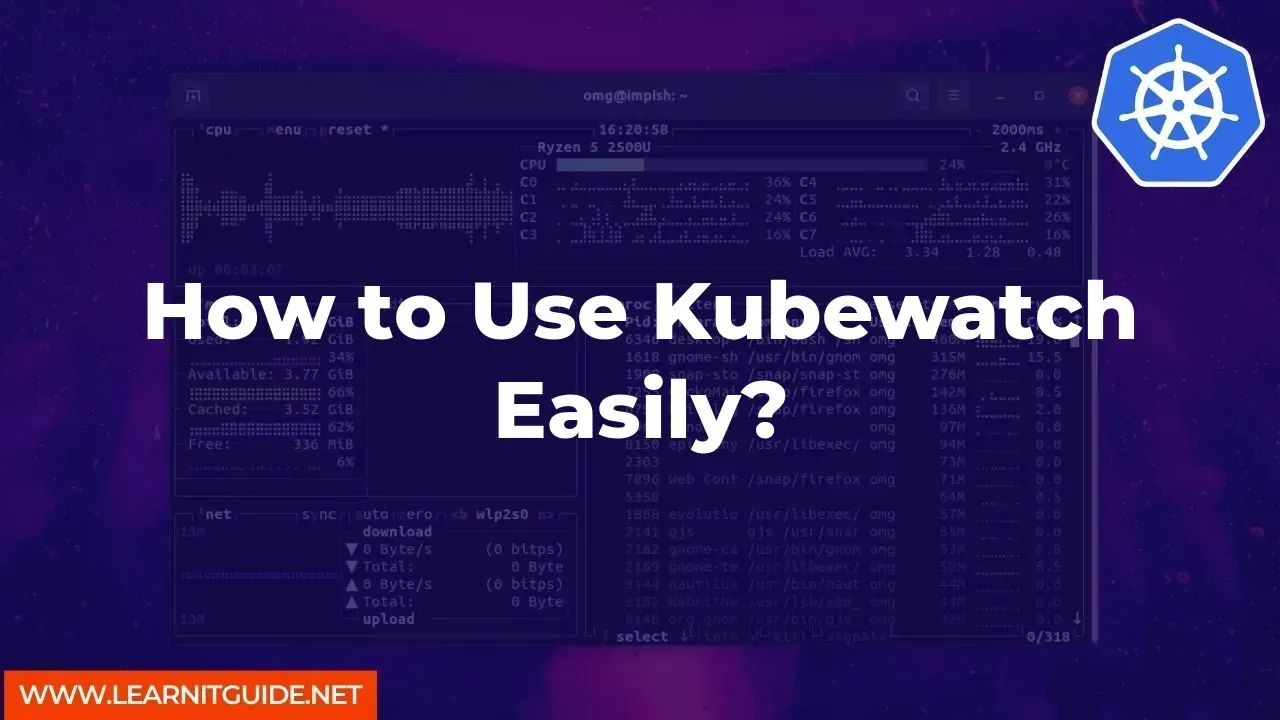Kubernetes is a powerful tool for managing containerized applications, but keeping track of all the changes and events can be a challenge. Kubewatch is a useful tool that helps you monitor your Kubernetes cluster by sending notifications when certain events occur. In this article, we will show you how to use Kubewatch easily, so you can stay on top of your Kubernetes environment.
Table of Contents
- What is Kubewatch?
- Installation
- Configuration
- Using Kubewatch
- Examples
What is Kubewatch?
Kubewatch is a Kubernetes watcher that sends notifications to various channels like Slack, Hipchat, and others. It can monitor a wide range of Kubernetes events, including pod lifecycle events, deployment status changes, service updates, and more. With Kubewatch, you can get real-time notifications when changes occur in your Kubernetes environment, so you can take action immediately.
Installation:
To use Kubewatch, you first need to install it on your Kubernetes cluster. There are a few ways to do this, but the simplest method is to use Helm. Here's how you can install Kubewatch with Helm:
- Install Helm on your machine if you haven't already done so.
- Add the Kubewatch repository to Helm:
helm repo add kubewatch https://kubewatch.github.io/kubewatch/ - Update your Helm repository:
helm repo update - Install Kubewatch:
helm install kubewatch kubewatch/kubewatch
Configuration:
Once you've installed Kubewatch, you need to configure it to send notifications to the desired channels. Here's how you can configure Kubewatch:
- Determine which channels you want to receive notifications in (e.g., Slack, Hipchat, etc.).
- Create a configuration file for Kubewatch (e.g.,
kubewatch-config.yaml). - In the configuration file, specify the channels you want to receive notifications in, along with any other settings you want to customize.
- Apply the configuration file to your Kubernetes cluster:
kubectl apply -f kubewatch-config.yaml
Using Kubewatch:
Now that Kubewatch is installed and configured, you can start using it to monitor your Kubernetes environment. Here's how you can use Kubewatch:
- Choose the events you want to monitor (e.g., pod lifecycle events, deployment status changes, service updates, etc.).
- Subscribe to the appropriate channels in your messaging platform (e.g., Slack, Hipchat, etc.).
- Wait for notifications to arrive when events occur in your Kubernetes environment.
Examples:
Here are a few examples of how you can use Kubewatch:
- Monitor pod lifecycle events: Subscribe to the
podschannel in your messaging platform to receive notifications when pods are created, updated, or deleted. - Monitor deployment status changes: Subscribe to the
deploymentschannel to receive notifications when a deployment's status changes (e.g., when a deployment is scaled up or down). - Monitor service updates: Subscribe to the
serviceschannel to receive notifications when services are created, updated, or deleted.
With these instructions, you should now be able to use Kubewatch easily to monitor your Kubernetes environment and stay on top of any changes or events that occur.
Related Searches and Questions asked:
That's it for this post. Keep practicing and have fun. Leave your comments if any.







0 Comments